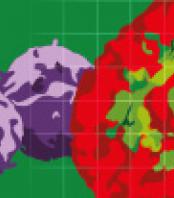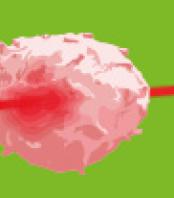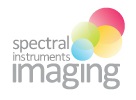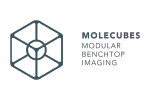PET/SPECT/CT preclinical imaging CUBES

Automated microscopy and Spatial Proteomics
Real-time, label free cell analysis
Nano and micro particle analysis

Accelerate to discover
Related topics
Automatic, Real Time Acquisition of Bioluminescent Kinetic Curves

Jun 27, 2024
Watch this pre-recorded webinar with Dr. Andrew Van Praagh to learn how our new Aura software feature —Kinetics—...
Theranostics: From Mice to Men and Back

Jun 25, 2024
Recorded webinar
Presenters: Prof. Dr. Ken Herrmann and Prof. Dr. Katharina Lückerath – Moderator: Hannah Notebaert
Orion 2024 AACR poster: 17-plex single-step stain and imaging of cell Lung Carcinoma

Jun 21, 2024
RareCyte Orion is a benchtop, high resolution, whole slide multimodal imaging instrument. A combination of quantitative...
Hypoxia in the Tumor Immune Microenvironment (TIME)

Jun 6, 2024
Thursday, 11 July 2024, 16:00 CET | 10:00 EST
Zaver M. Bhujwalla, PhD
X-RAD 320 for irradiation therapy during quantifying study for in vivo collagen reorganization

Jun 5, 2024
Quantifying in vivo collagen reorganization during immunotherapy in murine melanoma with second harmonic generation...
Use of MRI and microCT to evaluate gene therapy for the treatment of discogenic back pain

Jun 4, 2024
MRI images were obtained using the 9.4T Bruker BioSpec system, equipped with 40 mm 1H quadrature volume resonator, and...
Exosome-Mediated Delivery of Small Molecules, RNA & DNA for Development of Novel Cancer Therapeutics

Jun 3, 2024
Disha Moholkar of University of Louisville's Gupta Lab
Tuesday, June 11, 2024, 6:30 PM...
Emulate in vivo conditions – introduce shear flow to your experiments with BioFlux system

May 27, 2024
Most research is still conducted in vitro without the presence of flow. We use the BioFlux System to give you the...

Jan 31, 2023
In preclinical imaging, it is important to aim for dose reduction as longitudinal studies with many scanning time points can result in accumulated doses that impact your study results. However, lowering the dose in PET and CT imaging inherently introduces noise, and reduced image quality negatively impacts diagnostic performance. Various denoising techniques already exist, but deep learning (DL) methods have become increasingly popular for image quality enhancement.
Florence explains how she developed and evaluated an image-to-image CNN framework to predict higher quality images from noisier images acquired at lower radiation doses for both modalities.
Related technologies: PET, SPECT, CT
Get more info
Brand profile